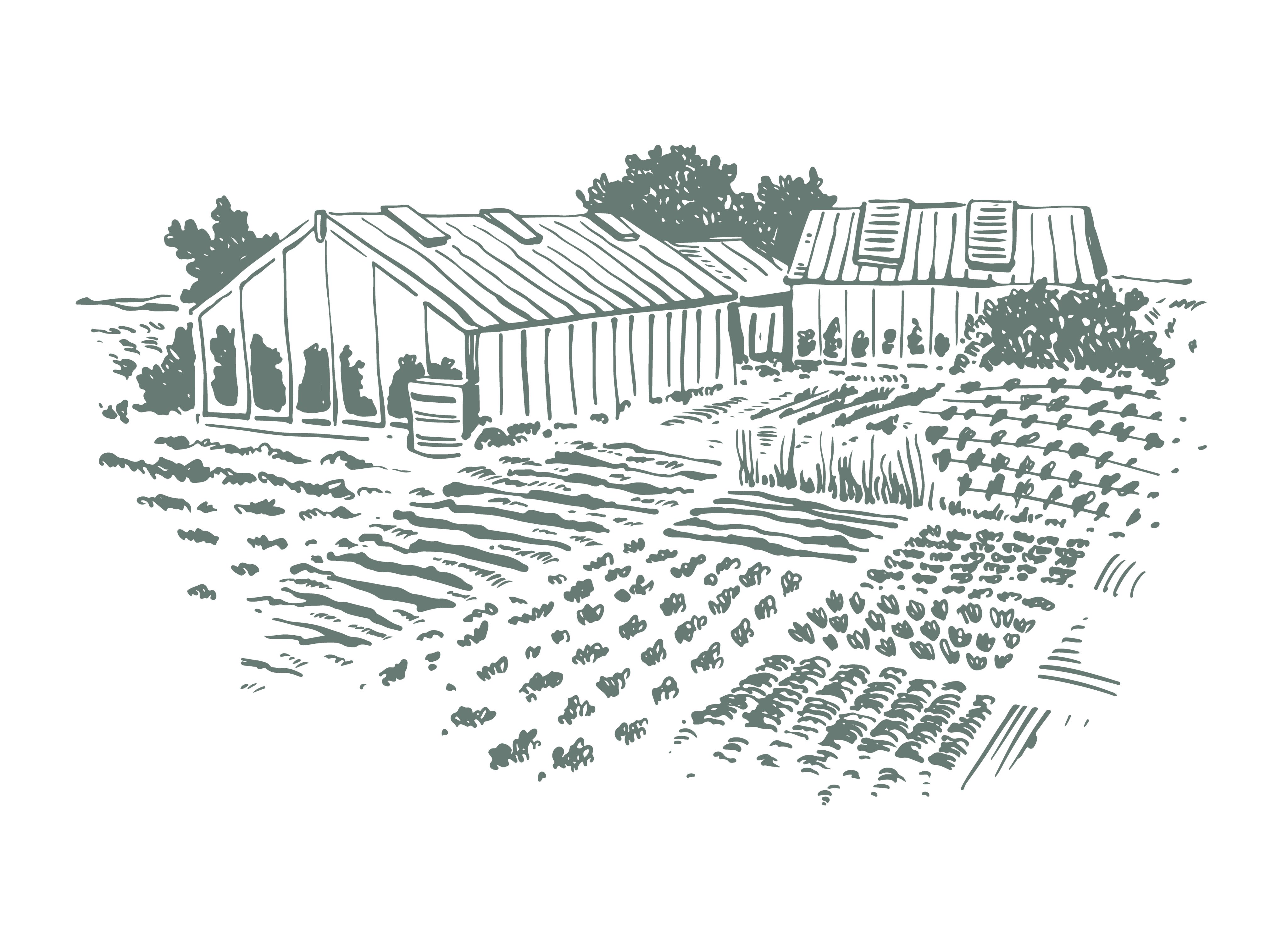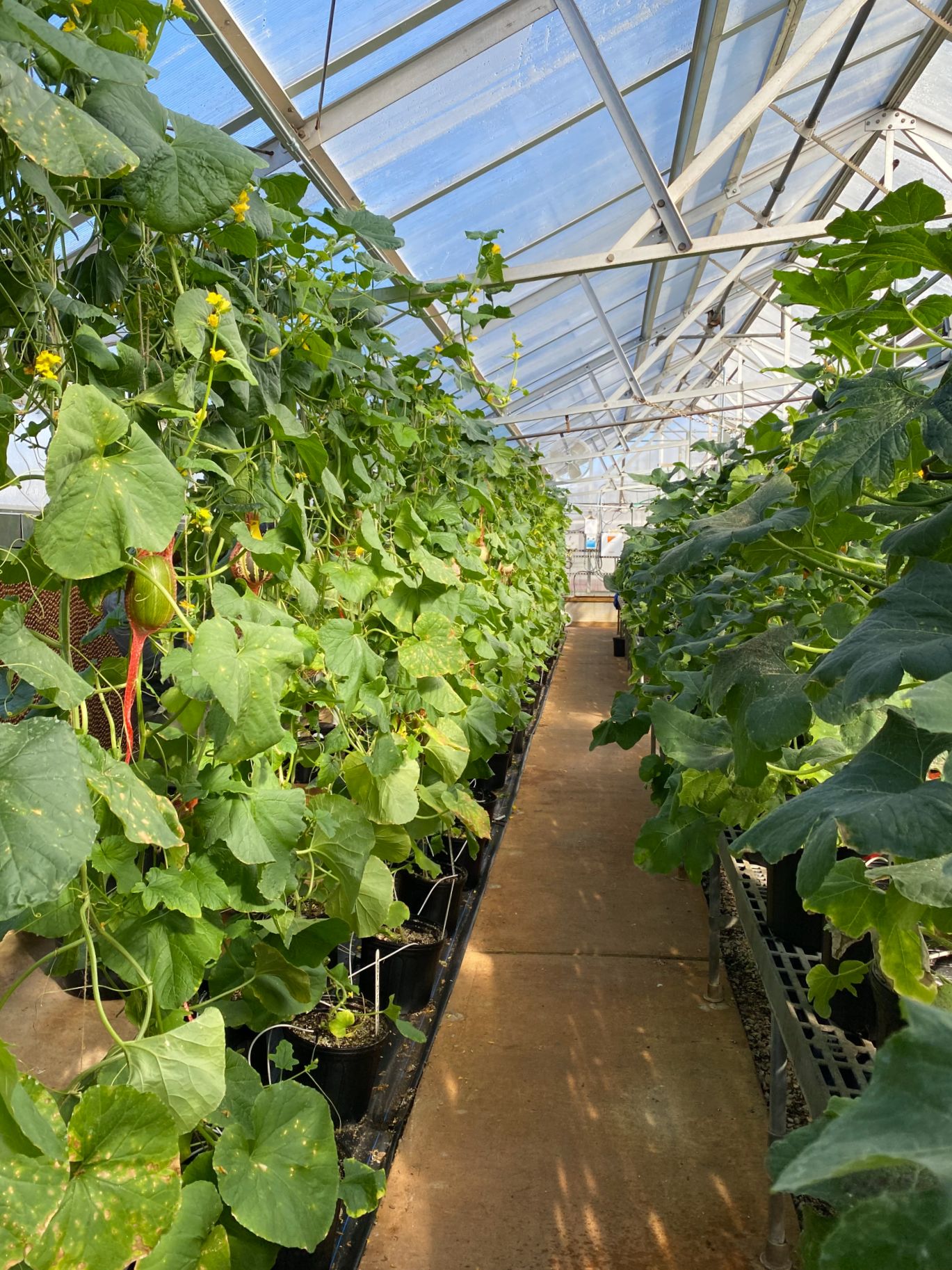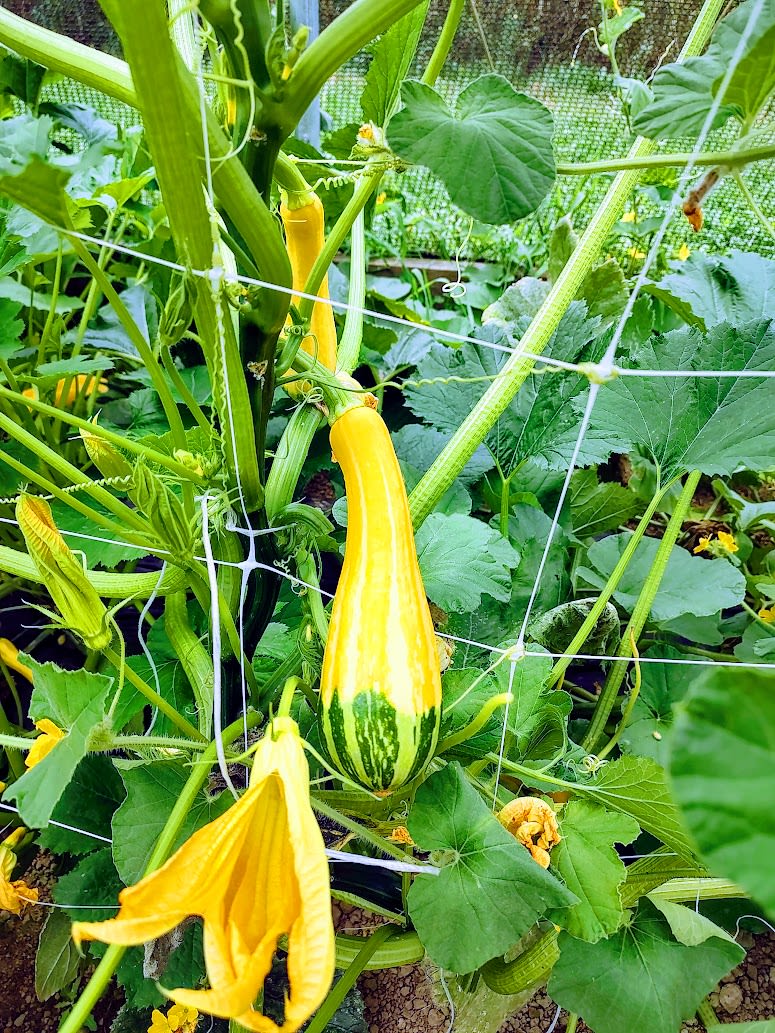Looking up
CAES alumnus joins UGA-Griffin faculty to expand food production through controlled environment agriculture
For plant breeder Andrew Ogden, things are looking up. Way up.
A new assistant professor in the University of Georgia Department of Horticulture at the College of Agricultural and Environmental Sciences (CAES), Ogden focuses on breeding members of the cucurbit family — namely melons and squash — in a vertical greenhouse environment. An asset to the UGA Griffin campus, Ogden joins the college's controlled environment agriculture research team, which was formed to support the ever-expanding green industry.
Ogden, who earned his master’s degree in horticulture from CAES in 2009, first discovered his love of agriculture while an undergraduate at the University of North Carolina-Chapel Hill, where he worked as an apprentice on a small organic vegetable farm.
“I really had no idea what I was going to do for a career when I started, but early on in college I became really concerned about the environment,” said Ogden.
“That led me toward thinking food is one area that could use some improvement. We are never going to get away from eating, so I zeroed in on food and food production.”
Ogden's research centers on growing cucurbits like melons and squash in his greenhouse at UGA-Griffin.
Ogden's research centers on growing cucurbits like melons and squash in his greenhouse at UGA-Griffin.
It was in the late 1990s, when organic farming was still quite new, that Ogden decided to pursue his master’s degree at CAES with an interest in helping improve organic farming practices.
After earning his degree, Ogden continued his work in North Carolina, and later Costa Rica, before spending a decade as a senior lecturer at the University of New Hampshire. It was there that he continued his work in plant physiology and controlled environments while gaining new knowledge and skills in plant breeding and plant pathology. That work eventually led him to back to UGA.
“I knew I wanted to get into a position that involved research and breeding and that wasn’t going to be possible at UNH. I did my master’s at UGA, and I really liked living in Georgia. I grew up in North Carolina and wanted to get back down South,” Ogden said.
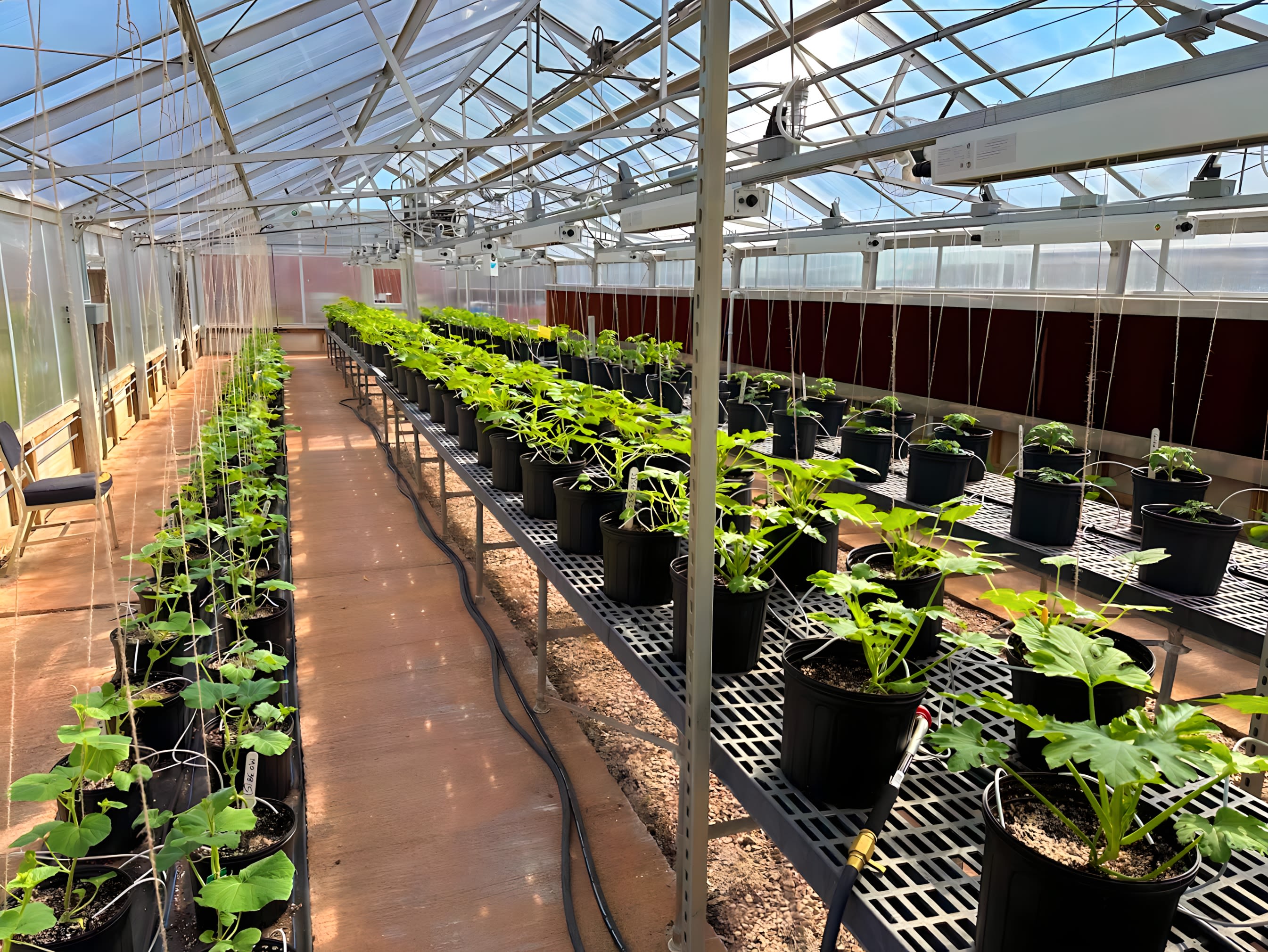
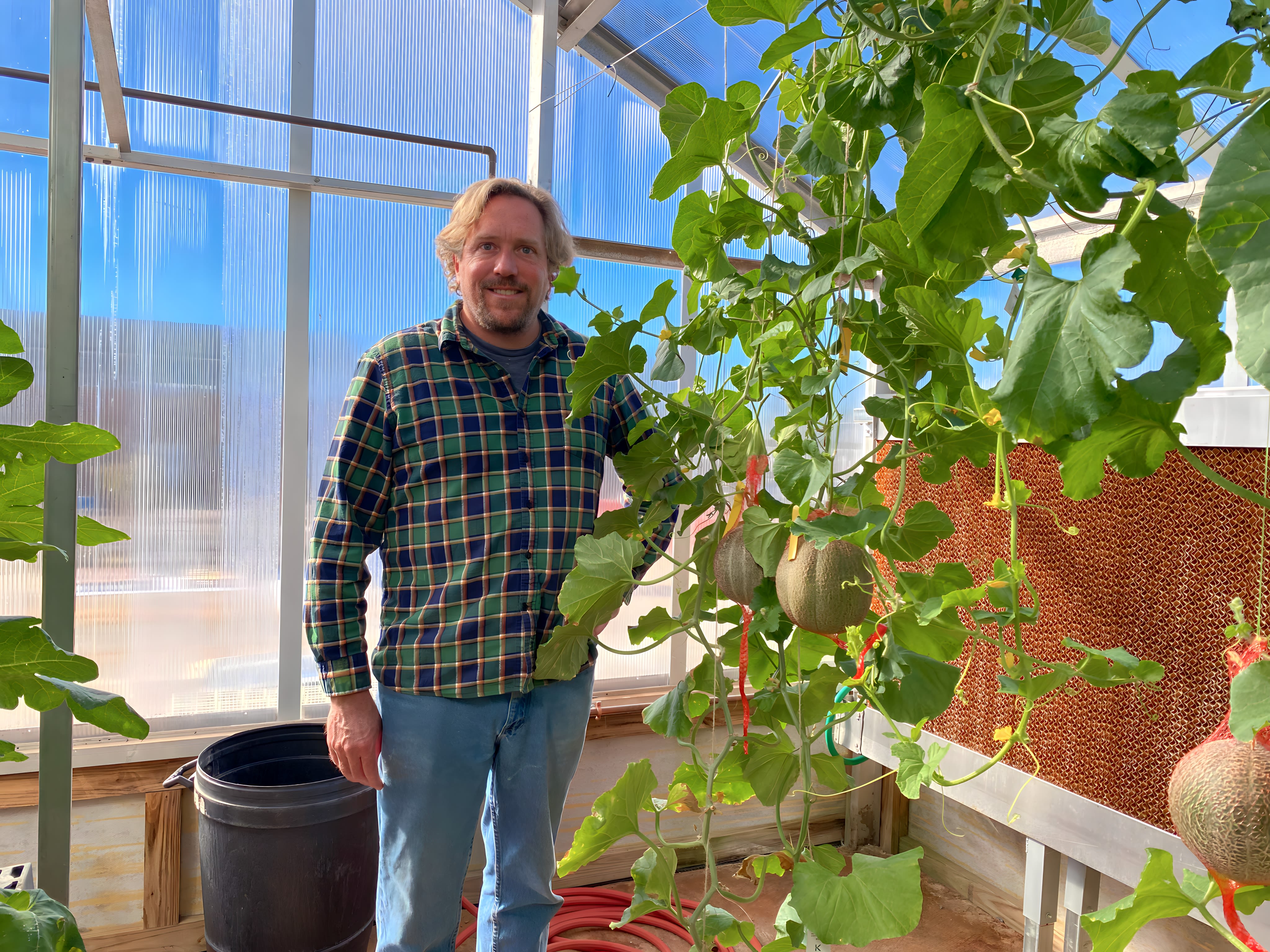
“When the position opened up here for a plant breeder in controlled environment agriculture, it was really kind of a perfect fit for me.”
Since joining the Griffin campus, Ogden has continued his melon research, with the goal of breeding flavorful melons that will perform well in a greenhouse environment.
Many types of melons available on the market today are bred for a long shelf life, which can lead to a loss of flavor, Ogden explained. He hopes to breed melons with a high sugar content — meaning more flavorful fruits — that are also disease resistant. High-sugar, more flavorful varieties often face increased disease and pest pressure and are susceptible to weather conditions when grown in the field.
“You can do all of that in a controlled environment,” said Ogden. “My hope is to be able to breed melons but also develop production practices that allow you to produce a crop you can be certain is always going to come out really good.”
While breeding for a distinct environment is a relatively new idea, Ogden said research into the concept is gaining momentum, particularly because of commercial interest. Controlled environment production in the private sector has primarily focused on greens like lettuce, a major crop that performs well in a greenhouse environment.
A melon, tagged with the date, grows vertically in plastic mesh.
A melon, tagged with the date, grows vertically in plastic mesh.
Given the large size of the plants, melons and squash do not immediately lend themselves to vertical farming, but Ogden is working to change that.
While at UNH, his breeding program focused on developing new varieties of summer squash, including one with bi-color fruit. Because the plants were grown in the field, he focused on developing compact, upright plants with no vining at all. However, for a controlled environment setting, the plants need to be trained to grow vertically, which would require vines.
“While I was working in the field, I would have some extend out into a semi-bush or vine habit, and we didn’t want that, but in a greenhouse you have the ability to train the plants to grow vertically,” said Ogden. “That is a good example of something that would be selected against in a field setting, but in a greenhouse is actually desirable.”
Ogden is excited about the possibilities controlled environment agriculture will bring to crop production and how they could benefit society. One benefit would be extending the growing season to year-round, producing crops that are normally climate-dependent in a greater variety of regions and increasing local food production.
“There is the potential of introducing new, maybe tropical crops or others that would not be able to grow here given the environment,” said Ogden.
Ogden uses netting to grow squash in the greenhouse.
Ogden uses netting to grow squash in the greenhouse.
While controlled environment agriculture offers many potential benefits, there are significant financial challenges.
“To build a modern greenhouse or a vertical farm, you’re talking about a large up-front investment,” said Ogden. “Then there are high production costs with high power usage, which is a big one especially if you want to grow things in the winter. There has to be a lot of careful planning to have it make sense economically. Our goal is to support the industry.”
UGA’s controlled environment agriculture faculty are currently working with large greenhouse operations including Gotham Greens, Pure Flavor, Local Bounty and Cornucopia Farms throughout the state of Georgia.
In addition to his research, Ogden hopes to follow the example of two mentors to whom he credits much of his success as a research scientist — Brent Loy, professor emeritus at UNH, and Marc van Iersel, the Vincent J. Dooley Professor in Horticulture at CAES. While neither is still living, Ogden wants to keep their memory alive by guiding his own students through their academic careers as they did for him.
Professor Marc van Iersel was a leading horticulture researcher and an innovator in controlled environment agriculture. (Photo by Andrew Davis Tucker)
Professor Marc van Iersel was a leading horticulture researcher and an innovator in controlled environment agriculture. (Photo by Andrew Davis Tucker)
“I feel a certain obligation to pass the torch, to train graduate students to use the knowledge and skills I gained from these two really great mentors,” said Ogden, noting that Loy and van Iersel continue to inspire him daily.
For more information on the research being conducted at UGA Griffin, visit caes.uga.edu/griffin. To learn how to get involved with CAES alumni like Ogden, visit caes.uga.edu/alumni.


